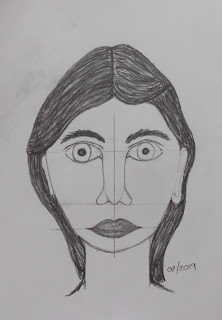We started by looking at the Marilyn Diptych by Andy Warhol, The Scream of Nature by Edvard Munch and Myra by Marcus Harvey. Through these images, we took time to explore narrative, process and emotion in portraiture.
We then considered the work of Nick Park and his characters Wallace & Gromit. Amazingly one member of the group had met him and another walked by his studio in Manchester each day when he was a boy - it's a small world!
Nick Park used a mirror to practise the expressions of his characters so, as in all good learning practises, we copied the approach.
Using a schematic to help place the features, mirrors & images from newspapers, we had a go at drawing different expressions.
The brilliant work follows - very well done everyone!
Today was our last session.
Thank you for making me feel so welcome. Your work has come on in leaps and bounds and lots of learning has been done too! Keep up the excellent work.

























































